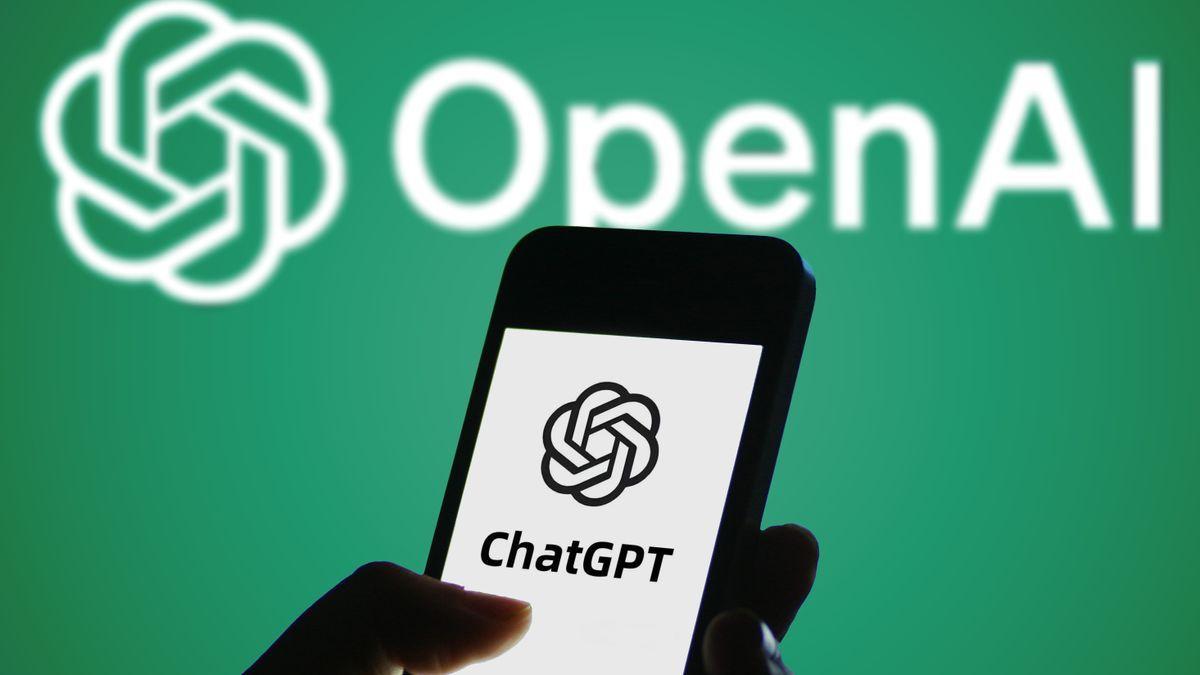AI Model Revolutionizes Cancer Diagnosis with 99% Accuracy Using Epigenetic Fingerprints
2 Sources
2 Sources
[1]
AI model detects brain tumors with high precision using epigenetic fingerprints
Charité - Universitätsmedizin BerlinJun 6 2025 The MRI image shows a brain tumor in an inauspicious location, - and a brain biopsy will entail high risks for the patient, who had consulted us due to double vision. Situations such as this case discussion, cited by way of example, in a multidisciplinary team of cancer medicine experts prompted researchers at Charité - Universitätsmedizin Berlin, together with cooperation partners, to look for new diagnostic procedures. The result is an AI model. The model makes use of specific characteristics in the genetic material of tumors - their epigenetic fingerprint, obtained for example from cerebrospinal fluid, among other things. As the team shows in the journal Nature Cancer, the new model classifies tumors quickly and very reliably. Today, far more types of tumors are known than the organs from which they arise. Each tumor has its own characteristics, certain tissue features, growth rates and metabolic peculiarities. Nevertheless, tumor types with similar molecular characteristics can be grouped together. The treatment of the individual disease depends decisively on the type of tumor. New, targeted therapies address certain structures of tumor cells or block their signaling pathways in order to halt the pathological tissue growth. Chemotherapies can be selected according to tumor type and their dosage adjusted accordingly. Particularly in the case of rare tumor types, it may be possible to pursue innovative therapies as part of studies. Against the backdrop of increasingly personalized, rapidly developing cancer medicine, precise diagnosis at a certified tumor center is the way forward for successful treatment." Prof. Martin E. Kreis, Chief Medical Officer at Charité While a comprehensive molecular, cellular and functional analysis of a tumor based on tissue samples provides the necessary information, physicians are also confronted with cases in which it is not possible or very risky to extract tissue samples from the tumor. What's more, even a histological examination alone is not capable of providing as precise a diagnosis as the new AI model. Looking into the genome instead of into the tissue A method has been established for characterizing brain tumors that is not based on conventional microscopic diagnostics, but instead on modifications of the tumor's genetic material, the epigenetic characteristics. They are part of the memory of every cell and determine which parts of the genetic information are read and when. "Hundreds of thousands of epigenetic modifications act as on and off switches for individual gene sections. Their patterns form a unique, unmistakable fingerprint," explains Dr. Philipp Euskirchen, scientist at the Berlin site of the German Cancer Consortium and at the Institute of Neuropathology at Charité, who heads the recently published study. "In tumor cells, the epigenetic information is altered in a characteristic way. Based on their profiles, we can differentiate between tumors and classify them." In the case of brain tumors, even a sample of the cerebrospinal fluid is sufficient in some cases, and can be obtained relatively easily - dispensing with surgery altogether. In order to compare an unknown fingerprint with thousands of known fingerprints of different cancers and assign it to a specific tumor type, machine learning methods, i.e., artificial intelligence, are required given that the data are very extensive and complex. What's more, different DNA sequencing methods were applied in the past. In addition, epigenetic analyses are usually limited to defined patterns and gene segments that are typical for individual tumor types. "Consequently, our aim was to develop a model that accurately classifies tumors, even if they are only based on parts of the entire tumor epigenome or the profiles were collected by means of different techniques and varying degrees of accuracy," as bioinformatician Dr. Sören Lukassen, head of the Medical Omics working group at the Berlin Institute of Health at Charité (BIH), stated. Reliable and traceable A newly developed AI model goes by the name of crossNN, whose architecture is based on a simple neural network. The model was trained with a large number of reference tumors and subsequently tested on more than 5,000 tumors. "Our model allows a very precise diagnosis of brain tumors in 99.1 percent of all cases and is more accurate than the AI solutions at work to date," as Philipp Euskirchen related. "In addition, we were able to train an AI model in the same way that can differentiate between over 170 tumor types from all organs, while achieving accuracy of 97.8 percent. This means that it can be used for cancers of all organs, in addition to the relatively rare brain tumors." The decisive factor for future approvals in clinical application is that the models are fully explainable, i.e., it must be possible to understand how the decisions are arrived at. The molecular fingerprint that the AI model receives for determination can stem from a tissue sample or from body fluids. In the case of specific brain tumors, the Department of Neuropathology at Charité already offers non-invasive diagnostics based on cerebrospinal fluid, known as liquid biopsy. This allows a diagnosis to be made without a stressful operation, also in difficult situations. The patient who consulted us with double vision was one of the beneficiaries. "We examined the cerebrospinal fluid using nanopore sequencing, a novel, very fast and efficient form of genetic analysis. The classification by our models revealed that it was a lymphoma of the central nervous system, enabling us to promptly initiate appropriate chemotherapy," Philipp Euskirchen explains. crossNN in clinical trials The accuracy of the methodology even took the researchers by surprise. "Although the architecture of our AI model is far more simple than previous approaches and therefore remains explainable, it delivers more precise predictions and therefore greater diagnostic certainty," says Sören Lukassen. Together with the German Cancer Consortium (DKTK), the research team is therefore planning clinical trials with crossNN at all eight DKTK locations in Germany. In addition, intraoperative use is also to be tested. The aim is to transfer the precise and comparatively inexpensive tumor determination based on DNA samples to routine care. Charité - Universitätsmedizin Berlin Journal reference: Yuan, D., et al. (2025). crossNN is an explainable framework for cross-platform DNA methylation-based classification of tumors. Nature Cancer. doi.org/10.1038/s43018-025-00976-5.
[2]
Tumor diagnostics: AI model detects more than 170 types of cancer
The MRI shows a brain tumor in an inauspicious location, and a brain biopsy will entail high risks for a patient who had consulted doctors due to double vision. Situations such as this case prompted researchers at Charité -- Universitätsmedizin Berlin to look for new diagnostic procedures. The result is an AI model. The model makes use of specific characteristics in the genetic material of tumors -- their epigenetic fingerprint, obtained for example from cerebrospinal fluid, among other things. As the team shows in the journal Nature Cancer, the new model classifies tumors quickly and very reliably. Today, far more types of tumors are known than the organs from which they arise. Each tumor has its own characteristics: certain tissue features, growth rates and metabolic peculiarities. Nevertheless, tumor types with similar molecular characteristics can be grouped together. The treatment of the individual disease depends decisively on the type of tumor. New, targeted therapies address certain structures of tumor cells or block their signaling pathways in order to halt pathological tissue growth. Chemotherapies can be selected according to tumor type and their dosage adjusted accordingly. Particularly in the case of rare tumor types, it may be possible to pursue innovative therapies as part of studies. "Against the backdrop of increasingly personalized, rapidly developing cancer medicine, precise diagnosis at a certified tumor center is the way forward for successful treatment," Prof. Martin E. Kreis, Chief Medical Officer at Charité, stated. While a comprehensive molecular, cellular and functional analysis of a tumor based on tissue samples provides the necessary information, physicians are also confronted with cases in which it is not possible or very risky to extract tissue samples from the tumor. What's more, even a histological examination alone is not capable of providing as precise a diagnosis as the new AI model. Looking into the genome instead of into the tissue A method has been established for characterizing brain tumors that is not based on conventional microscopic diagnostics, but instead on modifications of the tumor's genetic material, the epigenetic characteristics. They are part of the memory of every cell and determine which parts of the genetic information are read and when. "Hundreds of thousands of epigenetic modifications act as on and off switches for individual gene sections. Their patterns form a unique, unmistakable fingerprint," explains Dr. Philipp Euskirchen, scientist at the Berlin site of the German Cancer Consortium and at the Institute of Neuropathology at Charité, who heads the recently published study. "In tumor cells, the epigenetic information is altered in a characteristic way. Based on their profiles, we can differentiate between tumors and classify them." In the case of brain tumors, even a sample of the cerebrospinal fluid is sufficient in some cases, and can be obtained relatively easily -- dispensing with surgery altogether. In order to compare an unknown fingerprint with thousands of known fingerprints of different cancers and assign it to a specific tumor type, machine learning methods, i.e., artificial intelligence, are required given that the data are very extensive and complex. What's more, different DNA sequencing methods were applied in the past. In addition, epigenetic analyses are usually limited to defined patterns and gene segments that are typical for individual tumor types. "Consequently, our aim was to develop a model that accurately classifies tumors, even if they are only based on parts of the entire tumor epigenome or the profiles were collected by means of different techniques and varying degrees of accuracy," says bioinformatician Dr. Sören Lukassen, head of the Medical Omics working group at the Berlin Institute of Health at Charité (BIH). Reliable and traceable A newly developed AI model goes by the name of crossNN, whose architecture is based on a simple neural network. The model was trained with a large number of reference tumors and subsequently tested on more than 5,000 tumors. "Our model allows a very precise diagnosis of brain tumors in 99.1% of all cases and is more accurate than the AI solutions at work to date," Euskirchen says. "In addition, we were able to train an AI model in the same way that can differentiate between over 170 tumor types from all organs, while achieving accuracy of 97.8%. This means that it can be used for cancers of all organs, in addition to the relatively rare brain tumors." The decisive factor for future approvals in clinical application is that the models are fully explainable, i.e., it must be possible to understand how the decisions are arrived at. The molecular fingerprint that the AI model receives for determination can stem from a tissue sample or from body fluids. In the case of specific brain tumors, the Department of Neuropathology at Charité already offers non-invasive diagnostics based on cerebrospinal fluid, known as liquid biopsy. This allows a diagnosis to be made without a stressful operation, also in difficult situations. The patient who consulted us with double vision was one of the beneficiaries. "We examined the cerebrospinal fluid using nanopore sequencing, a novel, very fast and efficient form of genetic analysis. The classification by our models revealed that it was a lymphoma of the central nervous system, enabling us to promptly initiate appropriate chemotherapy," Euskirchen explains. crossNN in clinical trials The accuracy of the methodology even took the researchers by surprise. "Although the architecture of our AI model is far more simple than previous approaches and therefore remains explainable, it delivers more precise predictions and therefore greater diagnostic certainty," says Lukassen. Together with the German Cancer Consortium (DKTK), the research team is therefore planning clinical trials with crossNN at all eight DKTK locations in Germany. In addition, intraoperative use is also to be tested. The aim is to transfer the precise and comparatively inexpensive tumor determination based on DNA samples to routine care.
Share
Share
Copy Link
Researchers at Charité - Universitätsmedizin Berlin have developed an AI model called crossNN that can detect over 170 types of cancer with up to 99% accuracy using epigenetic fingerprints, potentially eliminating the need for risky biopsies.
Breakthrough in Cancer Diagnostics
Researchers at Charité - Universitätsmedizin Berlin have developed a groundbreaking AI model that promises to revolutionize cancer diagnosis. The model, named crossNN, utilizes epigenetic fingerprints to detect and classify tumors with unprecedented accuracy
1
2
.The Power of Epigenetic Fingerprints
Dr. Philipp Euskirchen, the study's lead researcher, explains that epigenetic modifications act as unique identifiers for cells. "Hundreds of thousands of epigenetic modifications act as on and off switches for individual gene sections. Their patterns form a unique, unmistakable fingerprint," he states
1
. In tumor cells, these epigenetic patterns are altered characteristically, allowing for precise differentiation and classification.AI Model Performance

Source: Medical Xpress
The crossNN model, based on a simple neural network architecture, has demonstrated remarkable accuracy:
- 99% precision in diagnosing brain tumors
- 97% accuracy in differentiating between over 170 tumor types across all organs
1
2
This level of accuracy surpasses existing AI solutions in the field, making crossNN a potential game-changer in cancer diagnostics.
Non-Invasive Diagnostics
One of the most significant advantages of this new approach is its potential for non-invasive diagnostics. In some cases, particularly for brain tumors, a sample of cerebrospinal fluid is sufficient for analysis, eliminating the need for risky surgical biopsies
1
.Real-World Application
The Department of Neuropathology at Charité has already begun offering non-invasive diagnostics based on cerebrospinal fluid analysis, known as liquid biopsy. Dr. Euskirchen shared a success story: "We examined the cerebrospinal fluid using nanopore sequencing, a novel, very fast and efficient form of genetic analysis. The classification by our models revealed that it was a lymphoma of the central nervous system, enabling us to promptly initiate appropriate chemotherapy"
2
.Related Stories
Implications for Personalized Cancer Medicine

Source: News-Medical
Prof. Martin E. Kreis, Chief Medical Officer at Charité, emphasizes the importance of precise diagnosis in the era of personalized cancer medicine. The crossNN model's ability to accurately classify tumors opens up possibilities for more targeted therapies and optimized treatment plans
1
2
.Future Prospects
While the accuracy of crossNN has surprised even its creators, the model's simplicity and explainability make it a strong candidate for clinical application. Dr. Sören Lukassen, head of the Medical Omics working group at the Berlin Institute of Health at Charité, notes, "Although the architecture of our AI model is far more simple than previous approaches and therefore remains explainable, it delivers more precise predictions and therefore greater diagnostic certainty"
2
.As crossNN enters clinical trials, it holds the promise of transforming cancer diagnostics, potentially reducing the need for invasive procedures and enabling faster, more accurate treatment decisions for patients worldwide.
References
Summarized by
Navi
[2]










